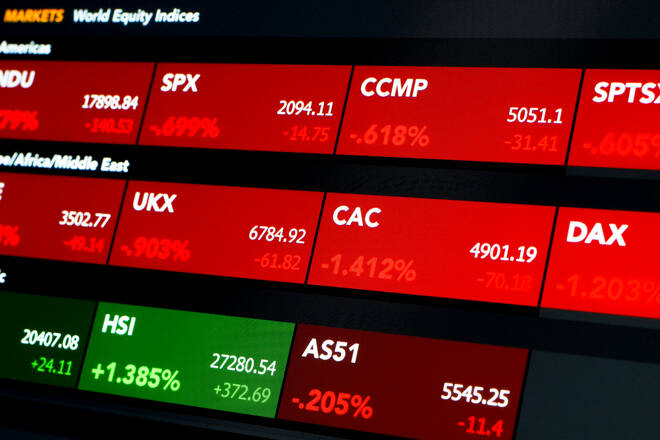Advertisement
Advertisement
January Service and Composite PMIs Hit the EUR ahead of Inflation Figures
By:
January service and composite PMI figures weigh on the EUR, with prelim January inflation figures for Italy and the Eurozone up next.
It was yet another busy morning on the European economic calendar, with economic data from France, Germany, Italy, Spain, and the Eurozone in focus.
Key stats January service sector PMI figures for Italy and Spain and finalized services and composite PMI numbers for the Eurozone. Finalized French and German Services and Composite PMIs also drew attention early in the session.
Member State PMIs
Spain’s services PMI slid from 48.0 to 41.7 in January versus a forecasted decline to 45.3. In December, the PMI had jumped from 39.5 to 48.0.
According to the January survey,
- The COVID-19 pandemic and snowstorms hit the sector.
- New work from home and overseas fell again, leading to an 11th consecutive monthly fall in employment.
Italy’s services PMI rose from 39.7 to 44.7 versus a forecasted decline to 39.5. In December, the PMI had inched up from 39.4 to 39.7.
According to the January Survey,
- Rates of decline in business activity and new orders fell at the slowest pace for 3-months and 4-months respectively.
- Weaker output was attributed to falling inflows of new work amid weak client demand.
France’s finalized PMI came in at 47.3, which was up from a prelim 46.5 while down from a December 49.1. In December, the PMI had risen from 39.8 to 49.1.
According to the finalized January Survey,
- A fresh decline in new orders as a result of COVID-19 containment measures weighed.
- While new business was in decline, staff numbers increased for the 1st time since Feb-2020.
- Firms remained optimistic while less optimistic than December’s 20-month high.
From Germany, the finalized PMI came in at 46.7, which was downwardly revised from a prelim 46.8 and down from a December 47.0. In December, the PMI had risen from 46.0 to 47.0.
According to the finalized Survey,
- Business activity fell for a 4th consecutive month.
- New orders were in decline, with new export business weighing.
- In spite of this employment rose at its strongest pace since Feb-2020.
- Year-ahead expectations was also on the rise, hitting a 23-month high.
The Eurozone PMIs
For the Eurozone, the finalized Services PMI came in at 45.4, which was revised up from a prelim 45.0. In December, the PMI had risen from 41.7 to 46.4.
The Composite PMI came in at 47.8, which was revised up from a prelim 47.5. In December, the Composite had risen from 45.3 to 49.1.
According to the finalized January Survey,
- Services was a drag on the Eurozone economy, with the sector contracting for a 5th consecutive month.
- Across the largest Eurozone members, only Germany recorded a rise in private sector output in January. This was in spite of German private sector growth softening to a 7-month low.
- COVID-19 restrictions remained the main cause of falling new work across the Eurozone.
- Incoming new work fell for a 4th month in a row.
- Staffing levels fell for an 11th consecutive month, albeit it at the weakest rate of decline in 11-months.
- Firms remained optimistic, with hopes of a successful rollout of a COVID-19 vaccine underpinning confidence.
What’s Next?
Italian and Eurozone prelim inflation figures for January are due out shortly. Markets are expecting a pickup in inflationary pressures at the start of the year.
For the Eurozone, the annual rate of inflation is forecasted to pickup to 0.5%, with the core annual rate of inflation forecasted to accelerate to 0.9%.
Market Impact
Through the release of today’s PMI figures, the EUR slid from a pre-release $1.20397 to a current day low $1.2010.
At the time of writing, the EUR was down by 0.11% to $1.20187.
For the European equity markets, the stats also weighed on the majors, leading a pullback from early highs.
At the time of writing, the EuroStoxx600 was up by 0.66%, with the CAC40 and DAX30 up by 0.33% and by 0.58% respectively.
About the Author
Bob Masonauthor
With over 28 years of experience in the financial industry, Bob has worked with various global rating agencies and multinational banks. Currently he is covering currencies, commodities, alternative asset classes and global equities, focusing mostly on European and Asian markets.
Advertisement
